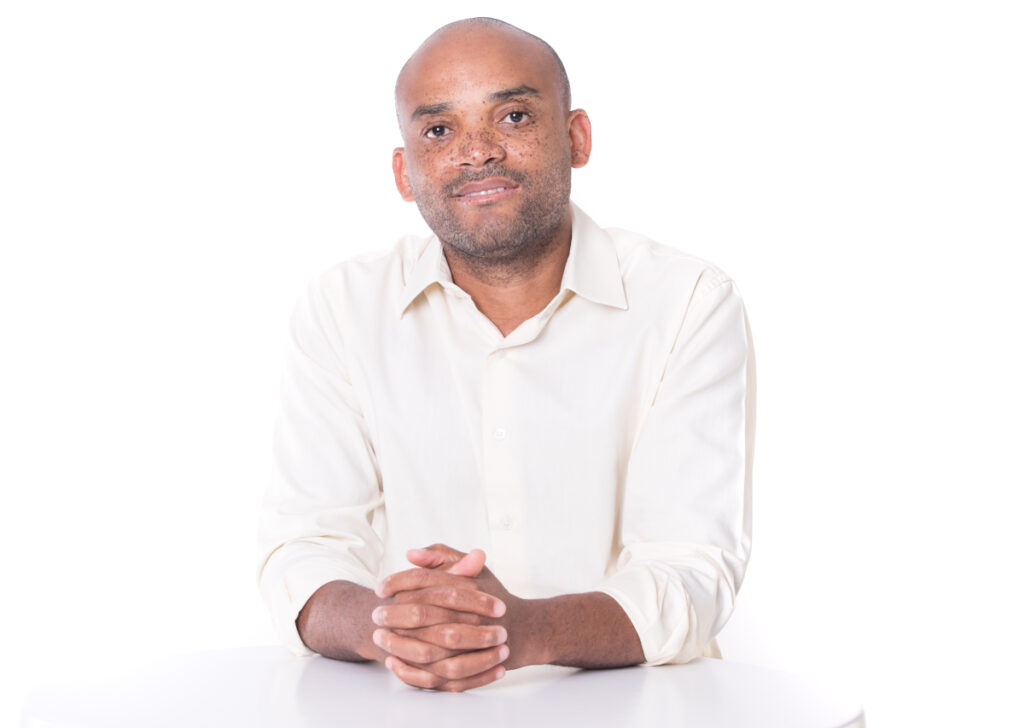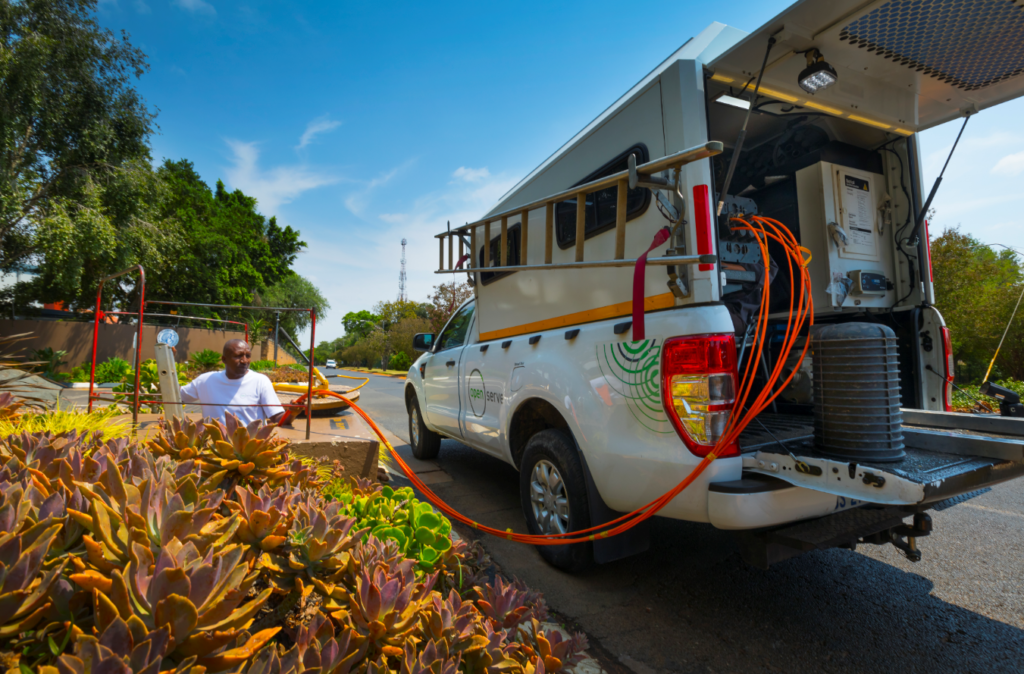Pushkar Gokhale, Chief Digital & Strategy Officer at Openserve
In conversation with Pushkar Gokhale, Chief Digital & Strategy Officer at Openserve
Work-from-home has accelerated the demand for high-speed connectivity; can you explain how next-generation connectivity has played a crucial role in the age of work from home?
It is important to acknowledge that pre-pandemic connectivity infrastructure helped a number of us to stay connected and migrate to remote interaction overnight. The home has become the epicentre of collaboration, work, education and lifestyle management. As more customers use technology to stay connected, fibre broadband has played an instrumental role in enabling this connected experience. The need for reliable, high quality and fast broadband connectivity is crucial to everyday life now more than ever, and this holds true especially as we experience continued waves of the Covid-19 pandemic.
As we stay home due to social distancing efforts, connectivity has become the bedrock on which interaction, remote work and collaboration have continued. What is crucial in enabling this experience has been the fixed fibre infrastructure that connects homes, businesses and mobile base stations. At Openserve, we believe that high speed fibre broadband will remain one of the most important enabling tools that will foster and grow a connected economy. We are excited about the future opportunities this holds for us as a fibre network operator and also for South Africa as it prepares for tomorrow’s challenges.
When it comes to installing fibre and providing additional support, Openserve’s technicians and field staff take stringent measures to ensure their own safety and that of our clients and customers. Navigating this pandemic while providing the best quality of service is a priority for us as we understand how critical it is to stay connected at all times.
How does Openserve plan to modernise and transform its infrastructure and network?
We are focused on creating an agile and future-focused organisation that is built on a robust network and distinctive customer experience. We are constantly striving to improve our portfolio of systems, enabling the automation of processes and migrating products and services to modern applications that allow customers and employees to have a digital experience.
With the increasing number of users consuming video-centric content, we are seeing continued growth in data consumption and as such, Openserve is confident that investments to modernise and transform our network will enable us not only to connect small businesses, enterprise and homes with fibre but also provide the fibre infrastructure for future 5G bandwidth requirements.
How does Openserve plan to get more South African homes connected?
As Openserve continues to roll out its fibre to the home and business network, we are confident that we can sustain and grow our leading connectivity rate of 51%; we aim to connect more premises that enable customers to consume internet services and collaborate with each other.
In addition to our fibre network rollout, we are also upgrading our infrastructure nodes that allow us to directly connect homes with fibre as the demand for it continues to grow. Demand is what drives our rollout plans and we aim to roll out fibre and connect premises across the country, including coastal cities, small towns and large metros.
We are confident that once you connect to our network, you will stay connected. As a wholesale connectivity provider, Openserve continues to offer reduced pricing and product incentives. This enables our partners — South Africa’s best internet service providers and resellers — to bring cost-effective and innovative connectivity plans and propositions to the market.
What are some of the trends in the world of connectivity, and how are these trends expected to change the broadband experience for customers?
Households around the world are connecting multiple devices to broadband connectivity like never before, and we have seen similar shifts here in South Africa. With an increased need for a stable, high speed and a quality broadband network that allows multiple concurrent sessions to be performed, we are seeing more devices connecting to a home network and consuming data at an exponential rate.
Connectivity trends have moved towards catering for these needs. While highlighting the need to be connected with high quality fibre broadband, expectations are now being focused on the quality of the Wi-Fi network within premises. There is often inadequate coverage across premises, which slows the internet experience.
Trends are once again showing an emergence of customer experience-led tools backed by an increased purchase of high-quality Wi-Fi mesh, Wi-Fi extenders and supplementary wireless hotspots devices. We believe such investments will only enhance the connected experience within premises and will need to be supported by a high speed and reliable fibre network, enabling homes to become the connected hub of the future.
What is the importance of bringing connectivity to estates and homeowner’s associations?
With connectivity becoming a new essential need, Openserve is seeing an increasing number of developers and HOAs that want to connect their estate with high quality fibre. They understand that a connected property elevates its value and is a prominent deciding factor for potential home buyers or tenants. Most importantly, the quality of service and the ability for fibre providers to maintain and support this infrastructure is increasingly influencing the choices that HOAs are making when choosing their fibre network provider.
Openserve is collaborating with a number of developers and estate managers to connect their respective properties to the Openserve fibre broadband network. Ensuring that this demand is adequately serviced, we have recently created a dedicated segment on our website to enable HOAs and developers to engage directly with us, request services, and get access to our connected offerings and solutions.
How does Openserve plan to continue with its digital transformation agenda?
With more people working and studying from home, the digital texture of the connected home has evolved to demand a more digital-led experience.
Having recognised that customers are looking for a connected experience that is centred around key factors such as authenticity in communication, digital self-service capabilities and improved platform performance, we launched the Openserve Connect App in 2020. A first of its kind, the app allows customers to understand their fibre network and is centred around information and education that enables them to interact with Openserve directly and gain better insights into their connected experience.
Through the app, customers can access the following self-service functions:
- Check broadband coverage.
- Explore Openserve broadband network services
- Place an infrastructure order enabling a connected home
- Track orders and appointments
- Track faults and appointments
- Check network status for outages
- Receive push notifications for status changes on faults and orders progress
- Perform a Wi-fi speed test.
Aligned to this, we have also revamped our website, which now includes a 24/7 virtual assistant to answer questions or assist with site navigation. The website also includes a learn-and-discover segment to help customers gain a better understanding of how broadband reaches their homes and factors that may influence their connected experience.
We will continue to digitalise our suite of applications and we are confident that our digital transformation journey will bring us closer to the customer and enable us to fulfil their current and future connectivity, and experience requirements.
Broadband infrastructure enables digital education, empowers new approaches to learning
During this past year, we saw a surge in technology adoption to help facilitate remote teaching and learning among students and teachers. This trend has continued as schools resumed with a mix of in-person, hybrid, and fully remote learning models.
 Phila Dube, Chief Commercial Officer at Openserve
Phila Dube, Chief Commercial Officer at Openserve
This trend highlights the pressing need for broadband infrastructure in the country, if our education system is to sustain the current demand.
The increased adoption of edtech tools presents huge opportunities for customers to review their connectivity options to support effective teaching and learning — both inside and outside the classroom — as we continue to navigate the so-called “new normal” in education.
Broadband as an enabler to education
According to the World Economic Forum, more than 1.2 billion children in 186 countries got affected by school closures due to the pandemic. This forced educational institutions to adopt online technologies at break-neck speed.
When digital technology was first introduced into schools, it was mainly seen as a way of enhancing traditional instruction. But just as technology has disrupted many other sectors of society, it is now poised to disrupt education. It is becoming clear that technology has the potential not just to improve education but also to transform the way students learn, both in the classroom and beyond.
High-speed broadband networks will not only accelerate learning, but they will also enable students to acquire the skills that they need to flourish in a post-industrial society
Connected learning leverages digital network technology to empower students to pursue their own interests and assemble their own curriculums, making it possible for them to learn anytime, in any place and at any pace.
Online resources that support this kind of individualised learning include search engines, digital libraries, blogs, wikis, podcasts, videos, social media, open education resources and specialised communities of practice. Broadband networks – both wired and wireless – are key to making this a certainty.
We will continue to see the proliferation of a hybrid approach to learning in South Africa in the foreseeable future. But for this to be truly effective, the basic tenet of connectivity needs to be in place – and a reliable and cost-effective one at that.
Education cannot be held hostage to a pandemic situation. While the pandemic and lockdown have led to unspeakable losses, in the education system, at least, one can see a silver lining — education being accessible in remote locations. As South Africa accepts virtual classes, freedom of subjects, flexible assessments, it will become easier to train the next set of workforce, who are already quite adapted to virtual platforms.
Connectivity to more of South Africa
Openserve strives to keep South Africans connected by providing the ultimate broadband experience for households, schools and businesses. Openserve is focused on providing next-generation and higher-speed connectivity solutions to more of South Africa.
 Openserve is confident that investments to modernise and transform their network will allow them to connect more businesses and homes with fibre but also provide the fibre infrastructure for future 5G bandwidth requirements
Openserve is confident that investments to modernise and transform their network will allow them to connect more businesses and homes with fibre but also provide the fibre infrastructure for future 5G bandwidth requirements
As reported earlier this week, Openserve’s annual results saw a 2.9 % rise in the fibre to the home (FTTH) connectivity rate to a pleasing 51.1%. As we continue to invest in a robust infrastructure network, we will aggressively increase our footprint in the latter part of FY2021 to pass approximately 549 900 homes with fibre, an increase of 20.7%.
We’ve upgraded existing fibre nodes, allowing us to use our strategic network investments to provide the ability to connect approximately 300 000 additional premises to our fibre footprint, thus increasing the overall premises that can connect and activate services on Openserve’s fibre footprint to over 800 000. What this means for schools, businesses and consumers alike is that access to connectivity is now a reality.
https://connect.openserve.co.za/